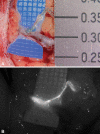Approach to Lymphedema Management
- PMID: 36561430
- PMCID: PMC9762993
- DOI: 10.1055/s-0042-1758691
Approach to Lymphedema Management
Abstract
Millions of people worldwide suffer from lymphedema. In developed nations, lymphedema most commonly stems secondarily from oncologic treatment, but may also result from trauma. More recently, lymphedema has been identified in patients after gender-affirmation phalloplasty reconstruction. Regardless of the etiology, the underlying pathophysiology involves blockage of lymphatic flow, resulting in lymph stasis, thus triggering a cascade of inflammation culminating in fibrosis and adipose deposition. Recent technical advances led to the refinement of physiologic and reductive surgeries-including lymphovenous anastomosis and free functional lymphatic transfer, which collectively encompass a variety of flap procedures including lymph node transfer, lymph channel transfer, and lymphatic system transfer. This article provides a summary of our approach in the assessment and management of the lymphedema patient, including detailed intraoperative photography and imaging, in addition to advanced technical considerations in physiologic reconstruction.
Keywords: FFLT; LYST; VLCT; VLNT; VLVT; free functional lymphatic transfer; lymphedema; lymphovenous anastomosis; lymphovenous bypass; supermicrosurgery; vascularized lymph node transfer.
Thieme. All rights reserved.
Conflict of interest statement
Conflict of Interest None declared.
Figures






















References
-
- Dayan J H, Ly C L, Kataru R P, Mehrara B J. Lymphedema: pathogenesis and novel therapies. Annu Rev Med. 2018;69:263–276. - PubMed
-
- Cormier J N, Askew R L, Mungovan K S, Xing Y, Ross M I, Armer J M. Lymphedema beyond breast cancer: a systematic review and meta-analysis of cancer-related secondary lymphedema. Cancer. 2010;116(22):5138–5149. - PubMed
-
- Achouri A, Huchon C, Bats A S, Bensaid C, Nos C, Lécuru F.Complications of lymphadenectomy for gynecologic cancer Eur J Surg Oncol 2013390181–86.(EJSO) - PubMed
-
- Szczesny G, Olszewski W L. The pathomechanism of posttraumatic edema of lower limbs: I. The effect of extravasated blood, bone marrow cells, and bacterial colonization on tissues, lymphatics, and lymph nodes. J Trauma. 2002;52(02):315–322. - PubMed

